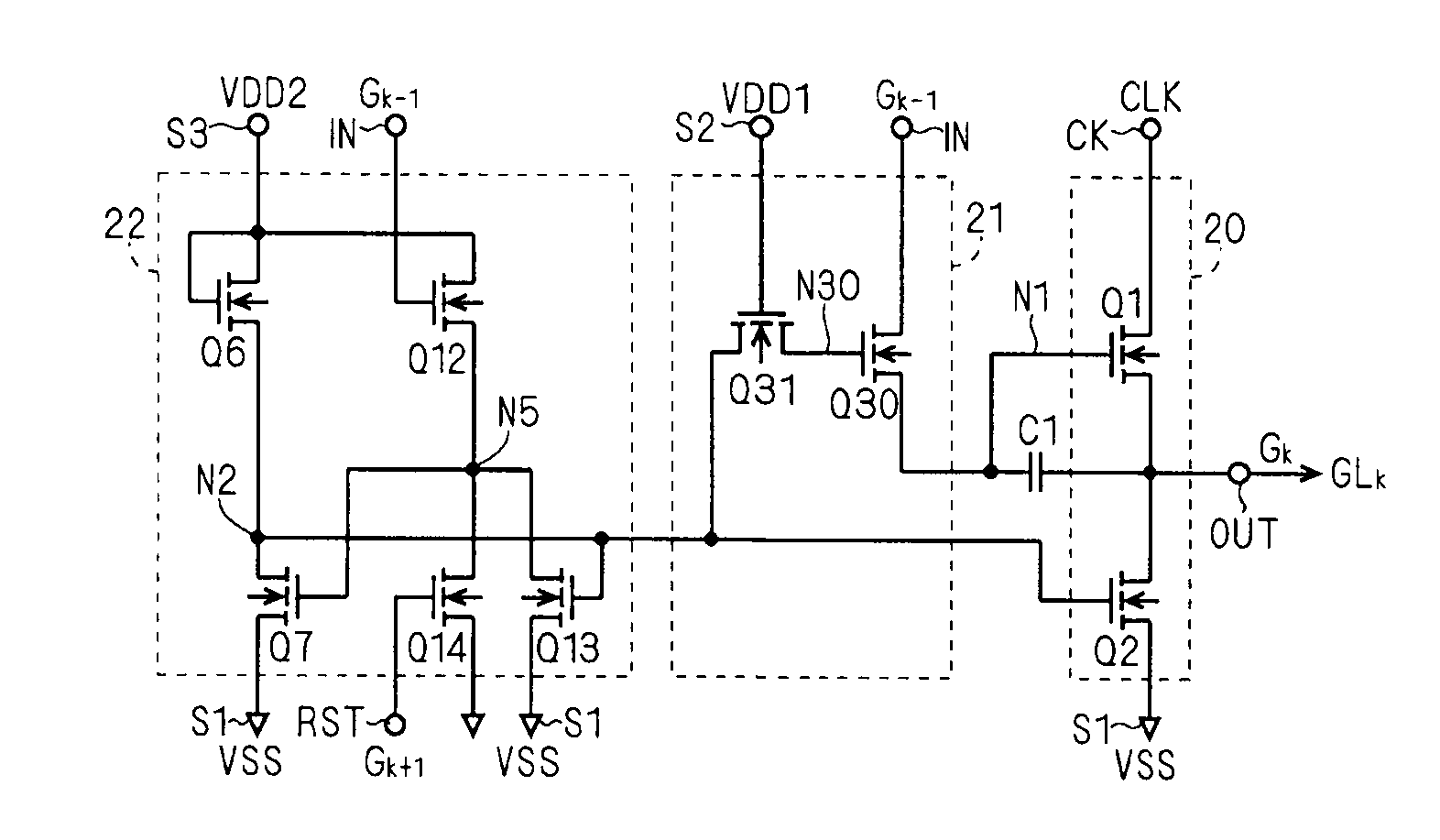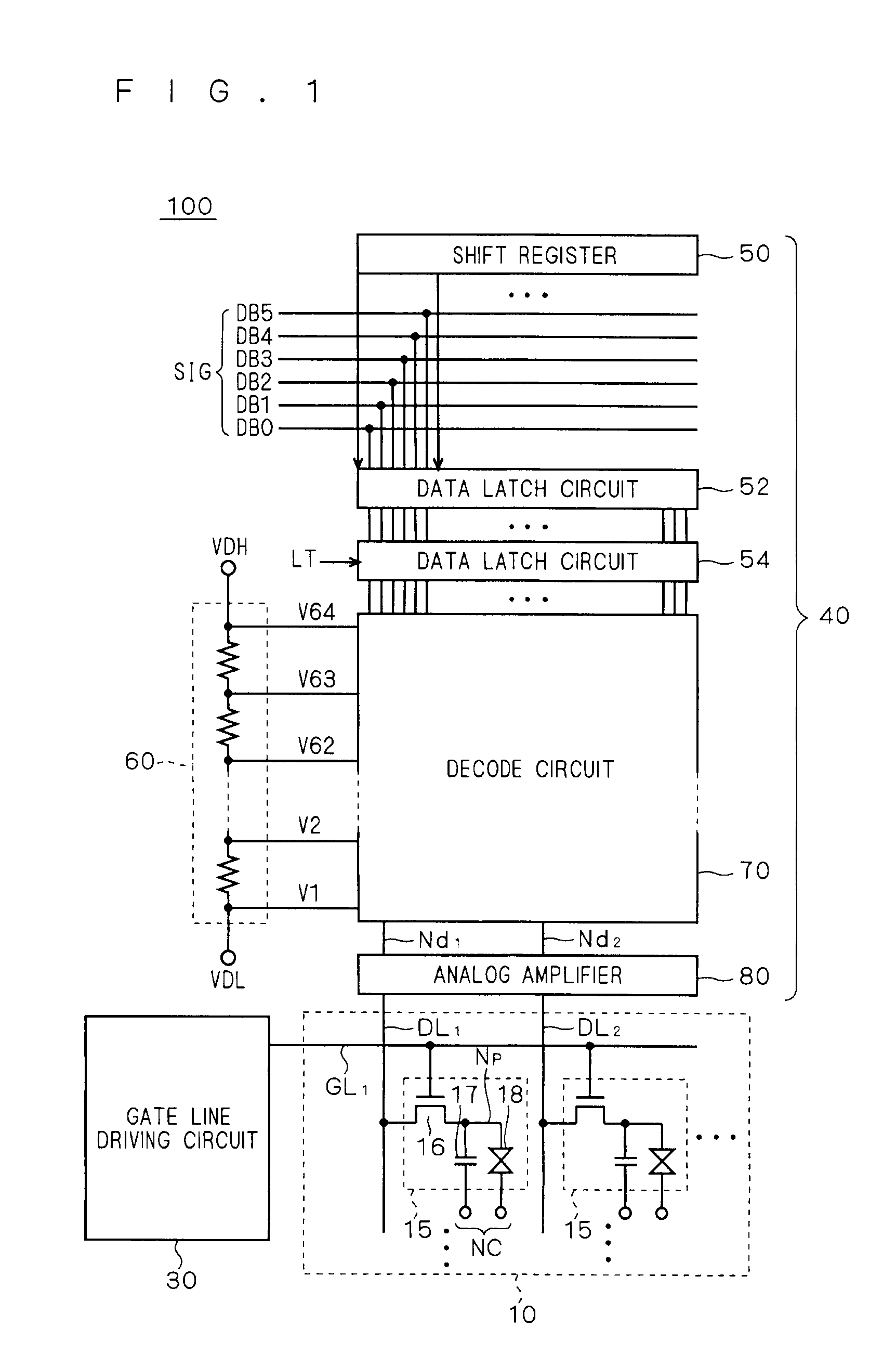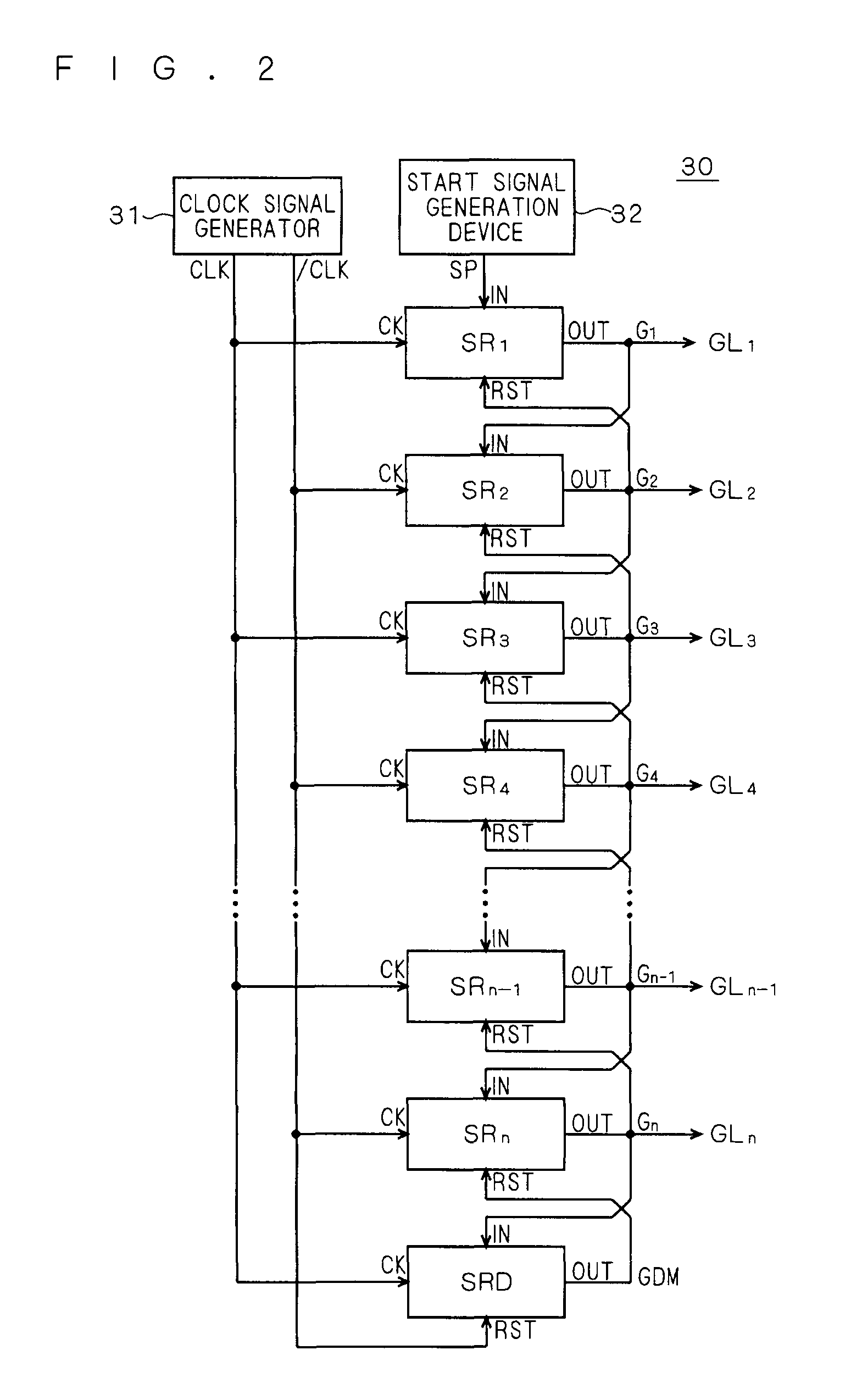Shift register circuit
a technology of shift register and drive capability, which is applied in the direction of information storage, static storage, digital storage, etc., can solve the problems of hindering the high resolution of display apparatuses, reducing the drive capability of first transistors, and unable to achieve the maximum pre-charge level of the first node, etc., to achieve the effect of suppressing the decrease of drive capability
- Summary
- Abstract
- Description
- Claims
- Application Information
AI Technical Summary
Benefits of technology
Problems solved by technology
Method used
Image
Examples
first embodiment
[0066]FIG. 1 is a schematic block diagram showing a configuration of a display apparatus according to the first embodiment of the present invention. In FIG. 1, an entire configuration of a liquid crystal display apparatus 100 is shown as a representative example of the display apparatus. It should be noted that a gate line driving circuit according to the present invention is not limited to application to a liquid crystal display apparatus, and can be widely applied to electro-optic apparatuses such as electroluminescence (EL), organic EL, plasma display, electronic paper, and image sensor. The liquid crystal display apparatus 100 includes a liquid crystal array unit 10, a gate line driving circuit (scanning line driving circuit) 30, and a source driver 40. As will be clear from the following description, a shift register according to the embodiments of the present invention is arranged in the gate line driving circuit 30.
[0067]The liquid crystal array unit 10 includes a plurality o...
second embodiment
[0186]FIG. 12 is a circuit diagram showing a unit shift register SRk according to the second embodiment. This unit shift register SRk has, in addition to the circuit of FIG. 3, a transistor Q15 connected between the gate of the transistor Q8 and the node N2 (the gate of the transistor Q8 is separated from the second power supply terminal S2) and a transistor Q16 connected between the node N3 and the input terminal IN. The gate of the transistor Q15 is connected to the second power supply terminal S2, and the gate of the transistor Q16 is connected to the node N1. A node connected to the gate of the transistor Q8 is defined as “node N6.”
[0187]In the circuit of FIG. 12, the input terminal IN is connected to the source of the transistor Q16, which means that the output signal of preceding stage Gk−1 is supplied thereto, but the clock signal / CLK having the same phase as the output signal of preceding stage Gk−1 may be supplied instead.
[0188]FIG. 13 is a timing chart for illustrating op...
fourth embodiment
[0257]In the fourth embodiment, the present invention is applied to a shift register which can change a shift direction of a signal. The gate line driving circuit 30 configured with such shift register can scan in both directions.
[0258]FIG. 19 is a circuit diagram showing the unit shift register SRk according to the fourth embodiment. The unit shift register SRk is based on the circuit of FIG. 3 but has a switching circuit 24 for switching a shift direction of a signal.
[0259]In the circuit of FIG. 3, the output signal of preceding stage Gk−1 is input to only one of the current electrodes of the transistor Q8 (input terminal IN), and the output signal of subsequent stage Gk+1 is input to only the gate of the transistor Q4 (reset terminal RST). In contrast, the switching circuit 24 of FIG. 19 can switch the two signals in accordance with the levels of the first and second voltage signals Vn and Vr.
[0260]As shown in FIG. 19, the switching circuit 24 includes transistors Q25r, Q25n, Q26...
PUM
 Login to View More
Login to View More Abstract
Description
Claims
Application Information
 Login to View More
Login to View More - R&D
- Intellectual Property
- Life Sciences
- Materials
- Tech Scout
- Unparalleled Data Quality
- Higher Quality Content
- 60% Fewer Hallucinations
Browse by: Latest US Patents, China's latest patents, Technical Efficacy Thesaurus, Application Domain, Technology Topic, Popular Technical Reports.
© 2025 PatSnap. All rights reserved.Legal|Privacy policy|Modern Slavery Act Transparency Statement|Sitemap|About US| Contact US: help@patsnap.com



